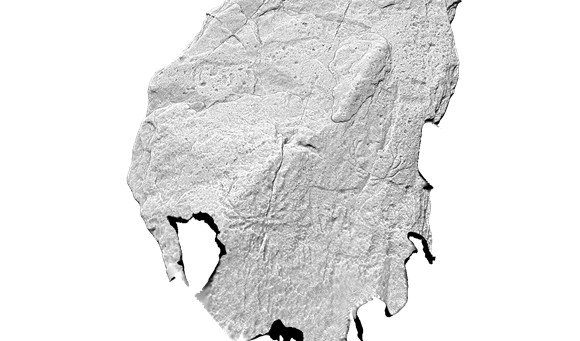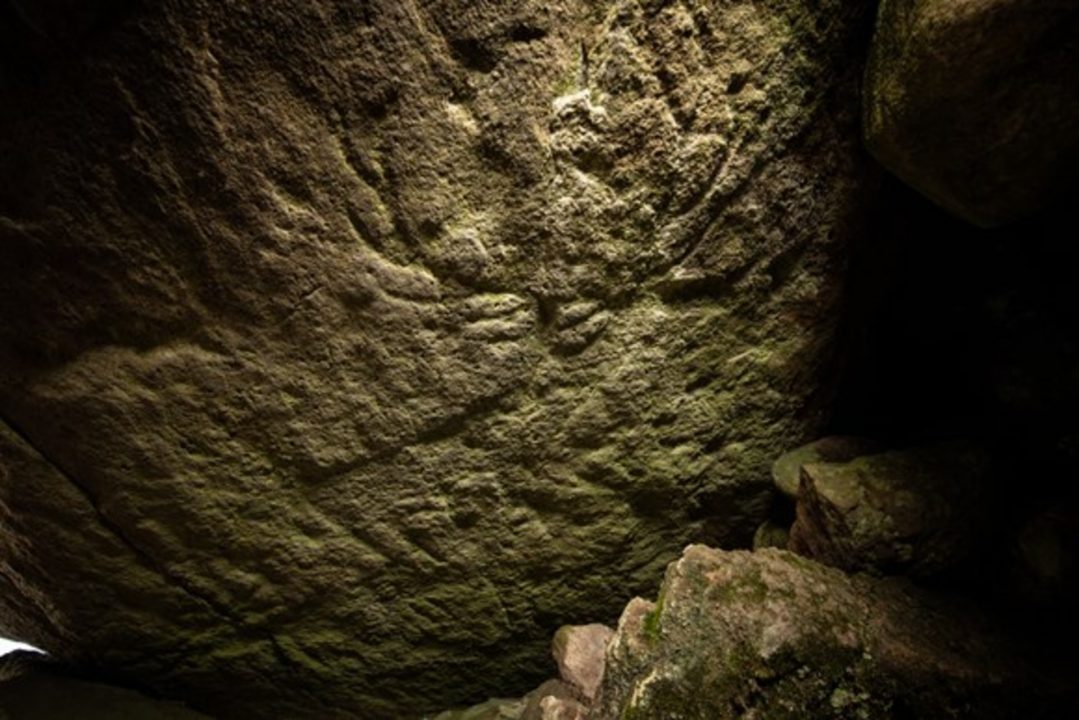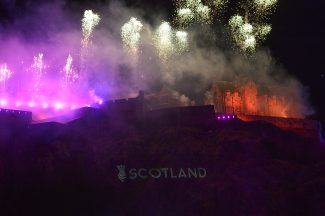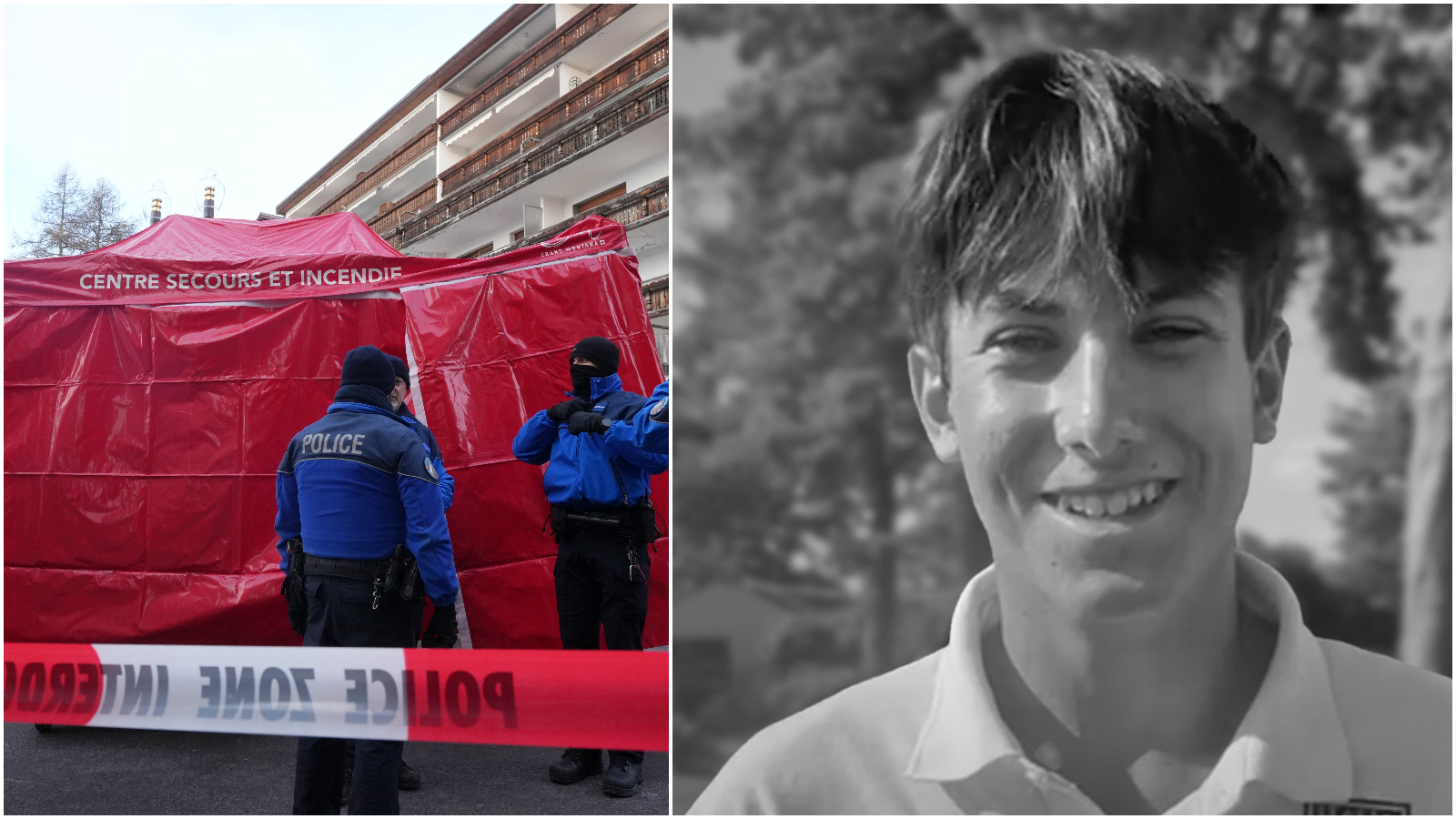Prehistoric carvings of animals have been discovered for the first time in Scotland.
Thought to be up to 5000-years-old, dating to the Neolithic or Early Bronze Age, they depict two male red deer with fully grown antlers, while other carvings are suggestive of younger deer, said Historic Environment Scotland (HES).
The pictures were discovered by chance in an ancient burial site at Dunchraigaig Cairn, Kilmartin Glen, Argyll, by Hamish Fenton, who has a background in archaeology.
 PA Media
PA MediaThe images are the earliest known animal carvings in Scotland, and the first clear examples of deer carvings from the Neolithic to Early Bronze Age in the whole of the UK, said HES.
Kilmartin Glen is known for its high concentration of ancient remains from the period, including some of the clearest cup and ring markings.
It is also the first time that animal carvings dating from this period have been discovered in an area with cup and ring markings in the UK, said HES.
Deer would have been a valuable source of bones, meat and hides, with their antlers used to craft a variety of tools.
Dr Tertia Barnett, principal investigator for Scotland’s Rock Art Project at HES, said: “It was previously thought that prehistoric animal carvings of this date didn’t exist in Scotland, although they are known in parts of Europe, so it is very exciting that they have now been discovered here for the first time in the historic Kilmartin Glen.
“This extremely rare discovery completely changes the assumption that prehistoric rock art in Britain was mainly geometric and non-figurative.
“It is remarkable that these carvings in Dunchraigaig Cairn show such great anatomical detail and there is no doubt about which animal species they represent.
“This also tells us that the local communities were carving animals as well as cup and ring motifs which is in keeping with what we know of other Neolithic and Bronze Age societies, particularly in Scandinavia and Iberia.
“This incredible discovery in Dunchraigaig Cairn makes us wonder if other animal carvings previously unknown to the UK are hidden in unexpected places in our ancient landscapes, waiting to be uncovered in the future.”
Mr Fenton said: “I was passing Dunchraigaig Cairn at dusk when I noticed the burial chamber in the side of the cairn and decided to slide inside with my torch.
“As I shone the torch around, I noticed a pattern on the underside of the roof slab which didn’t appear to be natural markings in the rock.
“As I shone the light around further, I could see that I was looking at a deer stag upside down, and as I continued looking around, more animals appeared on the rock.
“This was a completely amazing and unexpected find and, to me, discoveries like this are the real treasure of archaeology, helping to reshape our understanding of the past.”
There are more than 3000 prehistoric carved rocks in Scotland, the vast majority of which are abstract markings of a central cup mark surrounded by concentric rings.
“While many of these mysterious carvings can still be seen in the open landscape today, we know little about how they were used, or what purpose they served”, said HES.
Follow STV News on WhatsApp
Scan the QR code on your mobile device for all the latest news from around the country


 PA Media
PA Media
























